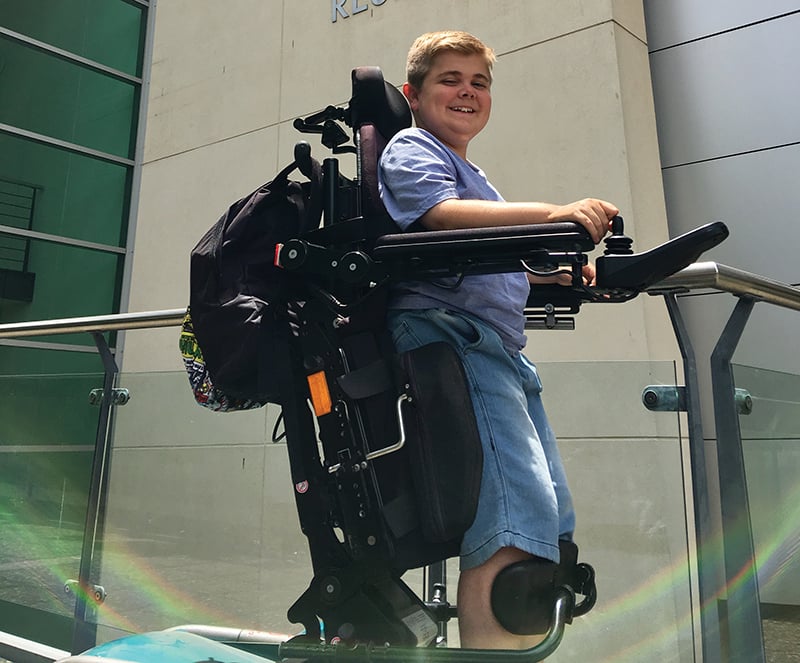
Logan Bayley
Klair Bayley knew her son Logan would eventually need a wheelchair. Diagnosed with Duchenne at the age of five, Logan’s muscle strength reduced dramatically as he went through primary school.
“He didn’t want to use a mobility scooter in high school because he thought people would think he was less mature. He wanted to feel safe in a big environment with bigger kids,” Klair said.
Motorised wheelchairs with a standing function – allowing the user to stand fully upright while being supported – had just become a reality. But they were extremely expensive, and not funded by the government.
That’s when Klair joined forces with The Kids Research Institute Australia’s Co-Head of Child Disability, Associate Professor Jenny Downs. In 2012, they received a small philanthropic grant to pay for standing wheelchairs for 14 boys. They were determined to not just help those boys, but to carry out rigorous research that could help every boy with this cruel disease access a standing wheelchair.
The results were life-changing.

While the rarity of Duchenne meant the study was relatively small, it found that giving the boys the option to stand up was associated with significant physical and mental health benefits.
Using a standing wheelchair allowed the boys to do some things more independently. They could speak eye-to-eye with their friends, reach items around the home, and crucially, take themselves to the toilet.
“They’re teenage boys and the standing wheelchair meant that they could toilet themselves more independently – giving them more privacy and capacity to do things by their own schedule,” Associate Professor Downs said.
“If they can manage more independently by themselves, that’s brilliant.”
Now 19, Logan Bayley still uses the chair to stand – and his mum credits the equipment with helping to keep her son more mobile than he otherwise might have been.
“It’s a complete gamechanger,” Klair said. “It felt empowering that we were in some way giving back what Duchenne was taking away.”
The boys involved in the study maintained their joint position in standing because they were moving more – but the biggest benefit was to their mental health.
“Both the parent- and child-reported evaluations of mental health indicated the boys were in a much healthier place mentally after they received the standing chair,” Associate Professor Downs said.

“Using these wheelchairs was promising to the boys’ quality of life because there was opportunity for more independence.”
The findings of this research had a further impact – providing the trigger for the development of a ‘consensus statement’, developed by local and international experts, which is now used by therapists when they make a case to have a boy’s standing wheelchair funded by the NDIS.
“The NDIS have not turned anybody down since we published that research, because the occupational therapists and physios can actually use the evidence base for their recommendation to purchase these expensive pieces of equipment,” Klair said.
“It’s being used in healthcare systems all around the world. That’s something we’re really proud of – to see this having an impact for kids and young adults everywhere.”
